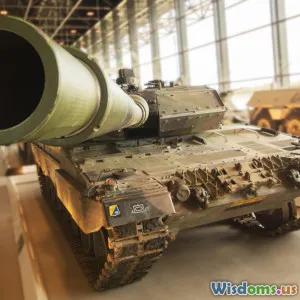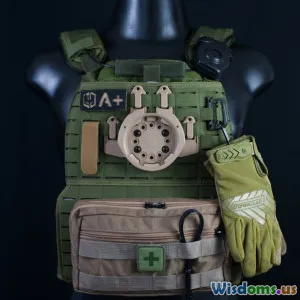
What Military Laser Weapons Can and Cannot Do Today
17 min read Explore the real-world capabilities and limitations of today's military laser weapons, from defensive uses to practical obstacles and myths. (0 Reviews)
What Military Laser Weapons Can and Cannot Do Today
Laser weapons have long been a staple of science fiction, painting thrilling scenes of futuristic combat driven by bolts of light and impenetrable energy shields. But away from Hollywood’s spectacle, military laser weapons—known as "directed energy weapons"—have quietly transitioned from laboratory prototypes to field tests and operational use. How close are we to the fantasy? And what are the practical realities, advantages, and limits of laser weapons today? Let's separate fact from fiction with a deep dive into their real-world capabilities.
The Dawn of Real-World Military Lasers
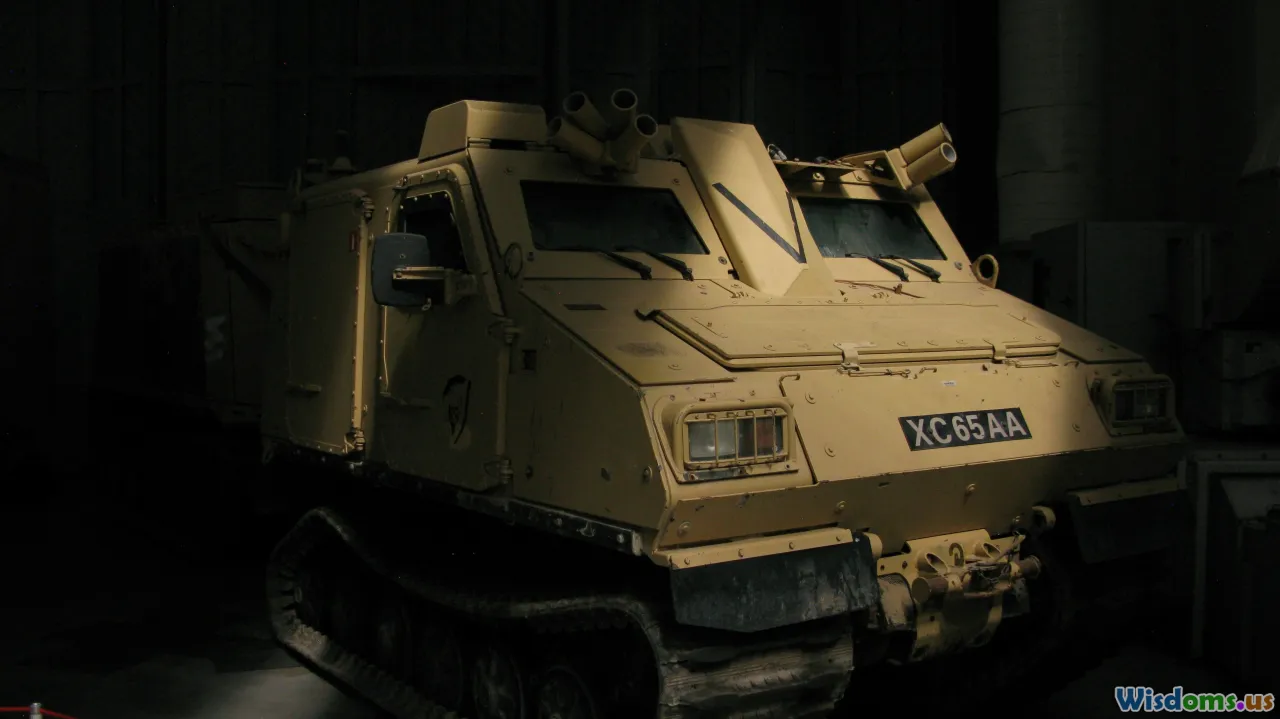
It wasn’t until the last decade that high-energy lasers moved from rudimentary experiments into serious contenders on the modern battlefield. Unlike conventional firearms or missiles, laser weapons harness tightly focused beams of energy—usually in the form of infrared light—to engage targets. When aligned correctly, these beams deposit intense heat into a small area, potentially burning through drones, sensors, or electronic circuitry in seconds.
The U.S. has been at the forefront of integrating directed energy into defense platforms. The Army’s Stryker-based "DE M-SHORAD," for instance, mounts a 50-kilowatt laser capable of shooting down small drones and incoming mortar rounds. Similarly, the U.S. Navy has deployed the "LaWS" (Laser Weapon System) aboard ships, using a 30-kilowatt laser to protect against fast, low-flying threats.
Field demonstrations have shown lasers effectively destroying drones mid-air and blinding sensors on small boats or vehicles. These advances underscore that—despite many technical hurdles—military lasers are here, albeit with functions and limitations seldom depicted in popular media.
Precision Engagement: What Lasers Can Destroy
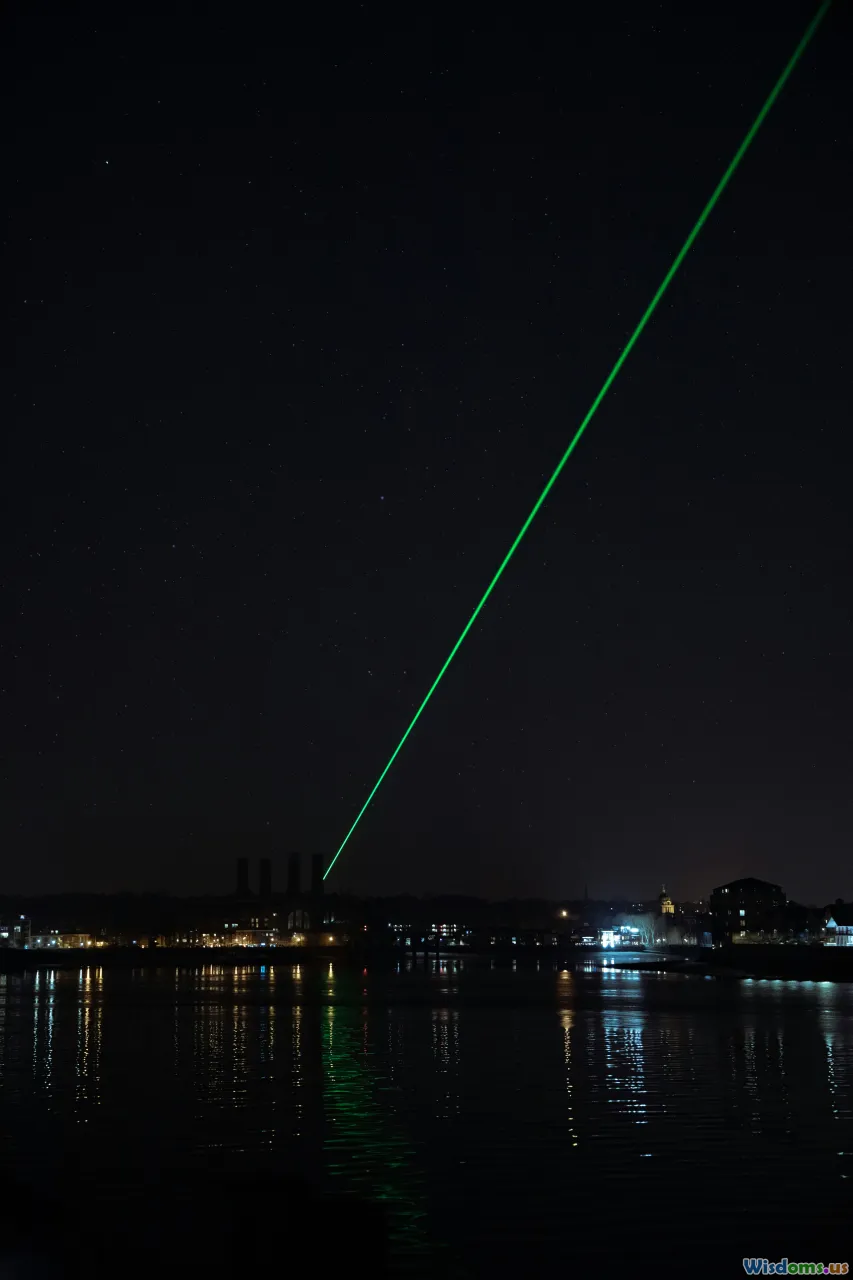
So, what are lasers actually good at? Their prime battlefield niche is in precise, low-collateral engagements, particularly:
-
Counter-Drone Operations: Lightweight commercial and military drones present a unique challenge to conventional defenses. Lasers, with nearly instant targeting, are ideal for zapping unarmored drones from the sky. In 2023, U.S. forces in the Middle East reportedly downed several small drones with fielded laser systems, confirming their effectiveness in real combat conditions.
-
Short-Range Missile and Mortar Defense: Modern close-range lasers can neutralize slow-moving or incoming projectiles—such as mortar shells, rockets, or small artillery—within a few kilometers. Israel's "Iron Beam" is a notable example, designed to complement the Iron Dome system by targeting incoming threats with a high-energy beam. While not foolproof, lasers add value where seconds count and kinetic munitions would be too slow or costly.
-
Blinding Enemy Sensors: "Dazzler" lasers don’t destroy but instead blind or confuse sensors on enemy platforms without causing lasting eye injury. These tools are invaluable for counter-surveillance, buying time for field forces.
These capabilities come with unique strengths. Unlike bullets or missiles, lasers don’t run out of ammunition (except for fuel or power) and travel at the speed of light, boasting almost zero latency between trigger pull and impact. This makes them cost-effective for swatting large numbers of small targets, like drone swarms.
Silent and Invisible: The Less Glamorous Truth

Forget Star Wars-style light shows. Most military-grade lasers emit energy at wavelengths invisible to the human eye—usually in the infrared range. There's no dramatic red or green bolt, only possibly a faint shimmer in the air and the hush of sophisticated cooling fans. When a target is struck, you might see smoke, sparks, or the sudden melting of metal, but the beam's path is silent and often undetectable without special equipment.
Another overlooked feature is how lasers interact with their environment. On a clear, dry day, their impact is swift and dramatic. But dust, fog, smoke, or rain can scatter or absorb the beam, weakening its power drastically. Operators must gauge atmospheric conditions meticulously, making the weapon as much a product of weather windows as warfare innovation. As a result, military planners see lasers as supplementary—never a total replacement for conventional kinetic defenses.
The Power Problem: Why Lasers Haven’t Replaced Bullets

With all their promise, military lasers face a stubborn medical problem: enormous energy requirements. A combat-effective laser today draws tens to hundreds of kilowatts for brief bursts—power equivalent to dozens of household microwave ovens—just to inflict seconds of destructive heat. Scaling up to "tank-killer" class would require even more.
Consider the U.S. Army's "HEL TVD" (High Energy Laser - Tactical Vehicle Demonstrator), fielded on a truck platform. Developers needed custom generators and robust cooling systems just to keep operations running for a few minutes of continuous fire. And while ship-mounted systems can tap into vast onboard generators, ground vehicles often lack portable, affordable power sources. Until compact, high-capacity batteries or more efficient power generation are available, high-energy lasers remain restricted by weight and operational cycles, especially outside fixed bases or large ships.
Vulnerabilities and Countermeasures: Not an Invincible Shield

Even the most advanced laser systems aren’t omnipotent. Engineers are already designing countermeasures:
-
Reflective Coatings: Some materials reflect laser light, dispersing its energy and minimizing harm. While no surface is perfectly immune to a focused, high-energy beam, adding mirrored or white paint can extend the time needed for penetration—sometimes making the attack unfeasible (especially if the beam must dwell on the same spot for several seconds).
-
Rapid Maneuvering: Lasers require sustained targeting for effect. Drones or vehicles employing erratic, high-speed movements become harder to hit and keep "painted" with the beam.
-
Smoke and Countermeasures: Deploying smoke or aerosol clouds can block or scatter laser light, making infrared beams ineffective. On a dusty battlefield, simple old-fashioned tools may keep multimillion-dollar laser systems at bay for crucial seconds.
-
Decoy Swarms: Malicious actors can overwhelm a laser system with "sacrificial" drones or decoy rockets, hoping to exhaust available power or distract sustained tracking. This limitation shows why kinetic—and even electronic—countermeasures remain indispensable.
Deployment Realities: Where and How Lasers Are Used

Deployment strategies for laser weapons hinge on their logistical footprint, power needs, and tactical niche. Today, you’ll mainly find them in roles such as:
-
Shipboard Defense: Naval platforms, with large generators, are ideal for mounting 30-150+ kW laser turrets aimed at intercepting incoming missiles, drones, or fast patrol boats. The USS Portland and USS Ponce are public examples of ships posturing with test units for regional airspace defense.
-
Vehicle-Based Systems: Trucks, armored carriers, and even small turrets can accommodate current-generation laser systems, provided they aren’t meant to move fast or operate independently for days. The U.S. Army's Striker Laser system is the most mature, zapping drones in medium-range drills.
-
Fixed-Base Shields: In places where infrastructure supports large-scale energy and cooling—like forward operating bases or airports—lasers are increasingly used for area denial against hostile unmanned aerial systems (UAS).
Yet, these deployments are far from foolproof. Battlefield trials consistently reveal teething issues: atmospheric attenuation, overheating, and power draw rates all reduce envisioned operational tempo. This ever-present reality keeps both expectations and budgets in check.
What Lasers CANNOT Do—Yet
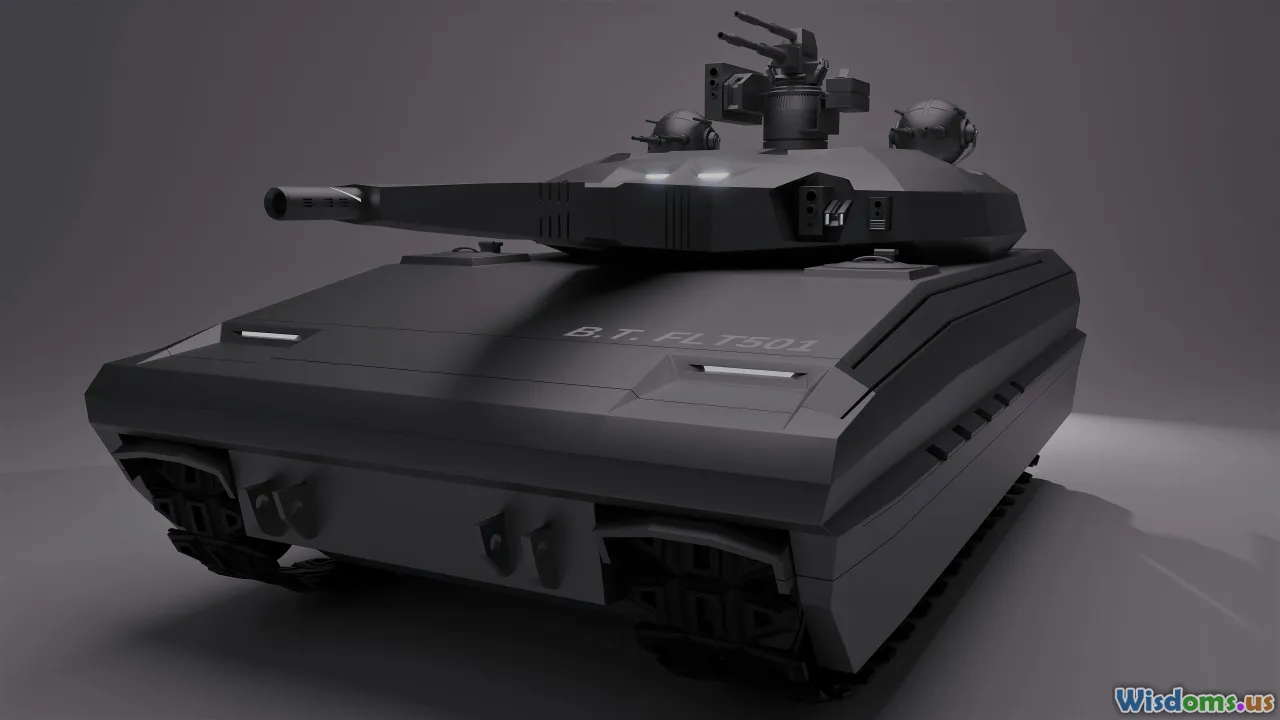
The biggest myth? Lasers blasting through tank armor or buildings with a flash like in movies. Here’s what they are notably incapable of doing today:
-
Pierce Heavy Armor: Main battle tanks or sheltered bunkers are safe for now. Blasting a hole in hardened armor would require an impractically large system with gigawatt-range power—on an entirely different scale from any deployed today.
-
Penetrate Thick Clouds, Rain, or Dust: Lasers are pegged as "weather weapons." Their effectiveness drops significantly the moment weather or battlefield obscurants appear, rendering them limited-purpose in fog or stormy conditions.
-
Engage Long-Range Aircraft or Satellites: World's most powerful operational systems top out at several kilometers, far less than the ranges required to strike aircraft at altitude or satellites in orbit. Absent major gains in power density and optics, the realm of "death rays from the sky" is science fiction.
-
Indiscriminate Area Effect: Unlike howitzers or bombs, lasers are ill-suited for saturating an area. Their true value lies in focused strikes on high-priority, exposed, and typically small targets only.
Seeking the Strategic Edge: Where Lasers Fit in Military Doctrine

What’s clear from their decade-long evolution is that directed energy weapons are best thought of as complementary rather than revolutionary. In modern doctrine, they provide a unique economic advantage—cheap per shot compared to expensive interceptor missiles—and fill critical gaps for rapidly evolving drone threats.
Another advantage is psychological and informational. Enemy drone operators know that, even if not every attack will succeed, the threat of a laser—silent and instant—changes the calculus of small-scale conflict. Lasers also offer escalation management; dazzler systems provide non-lethal replies to questionable intrusions (e.g., aircraft overflying a warship) where a missile could spark diplomatic crises.
Shifts in doctrine are visible globally. The United States, Israel, China, and Russia are all fielding or testing various high-energy lasers, each seeking to improve power, robustness, and targeting software. Emerging integration with tracking AI, surveillance radars, and even swarming drone intercepts point to a future where lasers may automate some aspects of low-tier defense.
Emerging Technology and the Road Ahead

Several research avenues are accelerating the march of military lasers:
-
Power Scaling and Battery Technology: Solid-state lasers are becoming more efficient, able to convert more electrical input into output energy. As next-generation compact power sources—like advanced batteries or compact generators—mature, expect smaller, more deployable laser platforms.
-
Advanced Beam Combination: "Spectral beam combining" merges many smaller lasers into a single, more powerful beam, offering a scalable path for higher energy without proportionately larger hardware.
-
Target Tracking AI: Integrating artificial intelligence for real-time threat recognition and targeting removes human error, optimizes kill time, and counters maneuvers otherwise too quick to track manually.
But, there are notable wildcards. International laws are still catching up to issues, like anti-personnel use (with the UN Protocol on Blinding Laser Weapons restricting intentional injury to eyes). And it's unclear exactly how potent future countermeasures might become as lasers become more widespread.
Realistic Advice for Military Planners and Enthusiasts

For military planners, the message is simple: embrace lasers where they have a comparative advantage, particularly in layered defense. Use them as a cost-saving, rapid-response tool to complement legacy systems, not as a standalone solution. Investing in logistics (power, cooling, operator training) is equally consequential as funding the laser hardware itself.
For tech enthusiasts and observers, the truth is both subtler and more thrilling than science fiction’s trope. Lasers are changing warfare at the margins first—a battle fought not with explosions and fireballs, but with heat, optics, and silent precision. Digital integration, counter-countermeasures, and operational experience will decide how far this technology can go in the next decade.
Ultimately, military lasers today are impressive but never all-powerful—chimera weapons of high potential and definite limitation. On tomorrow’s battlefield, they will likely sit side by side with missiles and guns, wielded by forces who see not only with their own eyes, but with the focused gaze of directed energy.
Rate the Post
User Reviews
Popular Posts













